One of the challenges of putting together copy and research for an exhibition is, you can't turn it into a book, it is meant to be a quick learning experience to inspire you to find out more. I decided for those who want a "bit more" I would blog about some of the reproduction aprons we used (the light level is too high in the area for originals) and a bit more about the dating and history of some of the images. 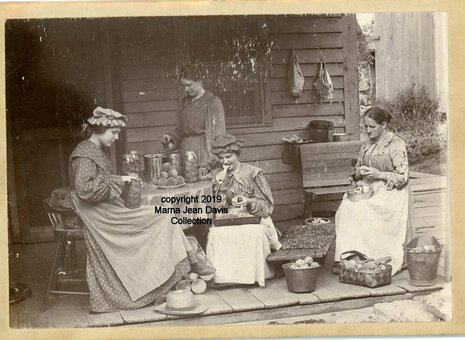 As you enter the exhibit this image is featured. This is 1890's and seems to be ladies canning peaches. The aprons here are pretty typical of late Victorian everyday wear aprons. A simple long rectangle gathered to a waistband that covered most of the skirt. I could imagine this happening on the porches at Nash Farm when I acquired this image for my collection. Many of the original aprons like this I have seen make use of selvage edges as the sides of the apron, leaving two less hems required when making an apron.
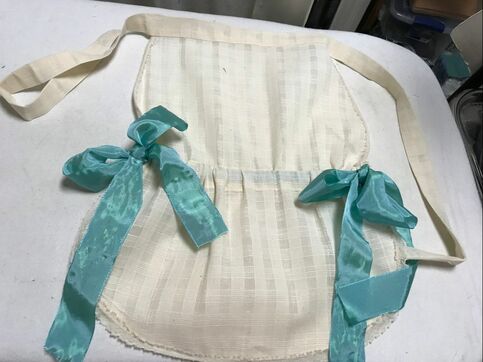 By the needlework panel you will find a knitting apron. This was modeled after an original in my collection. It is meant to be a portable "pocket" that holds your needlework or knitting. If you have to put it aside to tend to another chore, simply remove the apron and it is all neat and tidy for the next spare minutes. The original apron is a white barred cotton. The strings are not made long enough to tie, but instead would pin together. I chose slightly wider ribbon on my reproduction and a sheer ivory barred fabric. I hope you get a chance to visit Grapevine and see the exhibit and stop by Nash Farm and say Hello! below are a few images of me and my visit to the finished exhibit. Views from Grapevine, TX- Aprons of the Past
1 Comment
|
AuthorPainfully obsessed clothing historian, Archives
January 2022
Categories
All
|
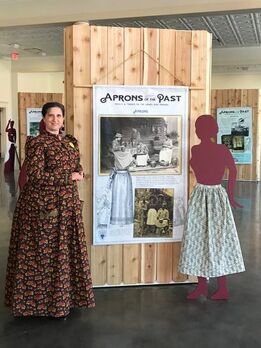
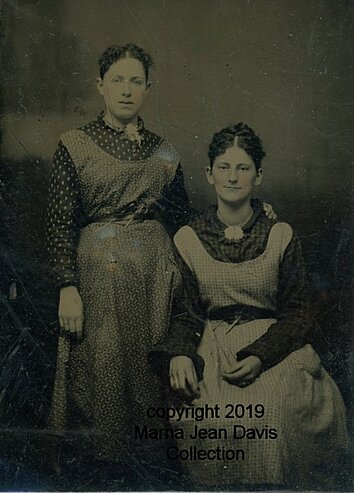
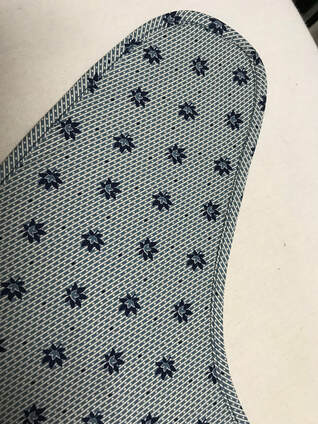
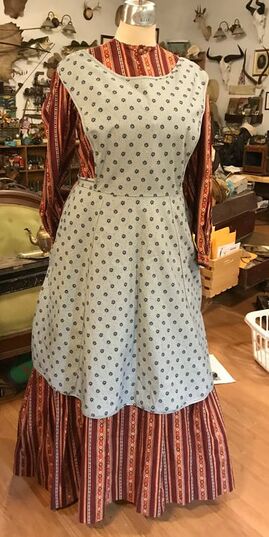
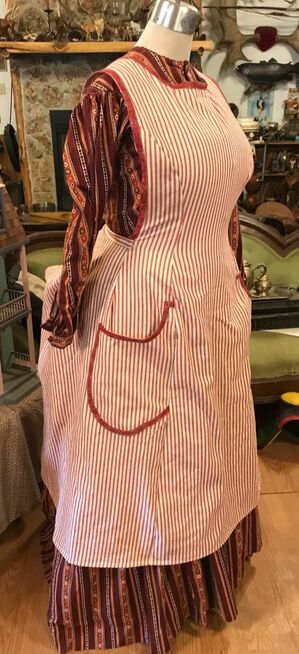
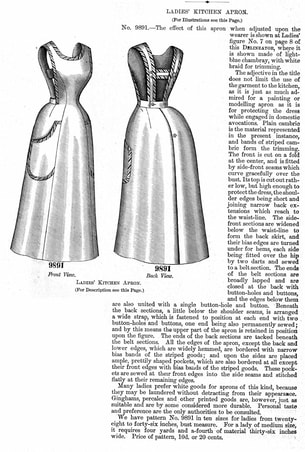
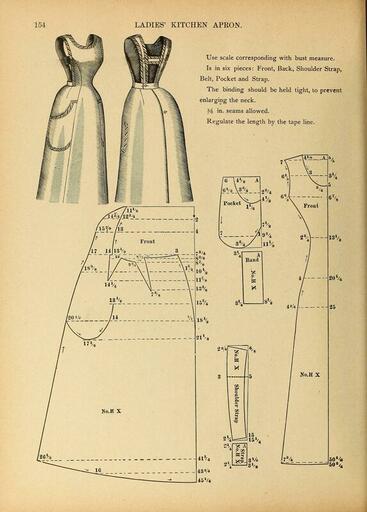
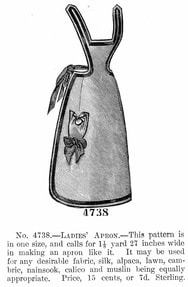
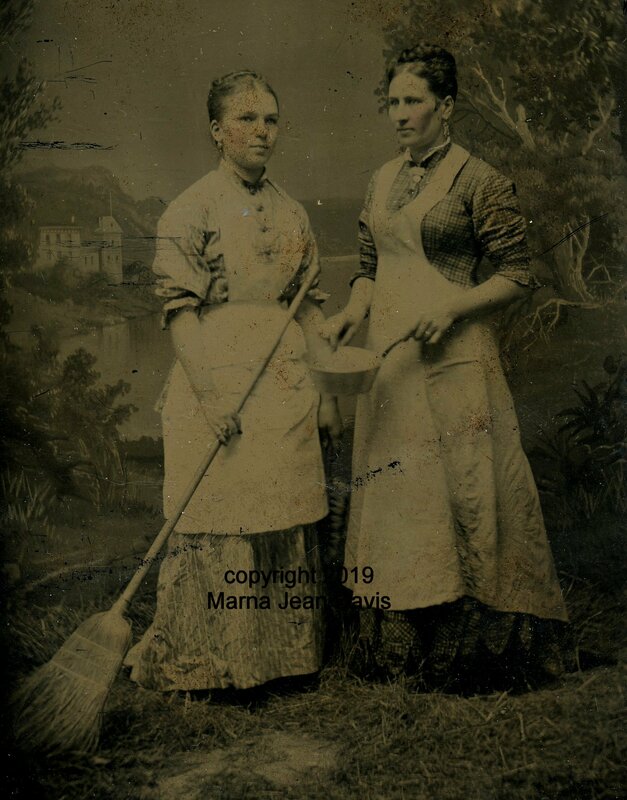
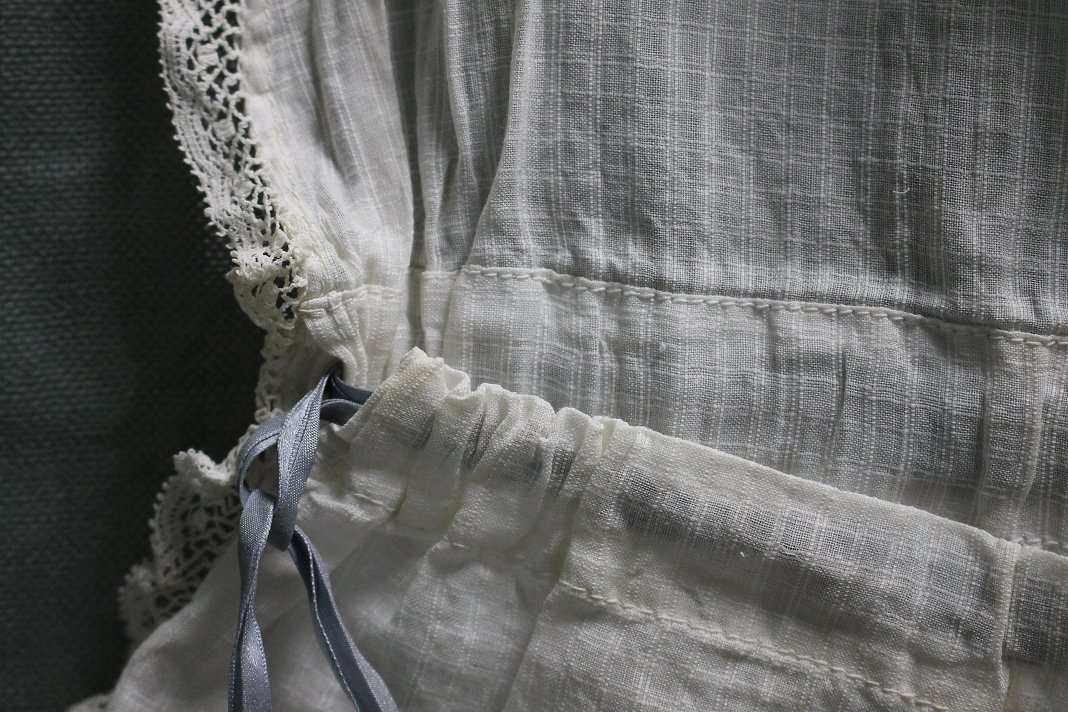
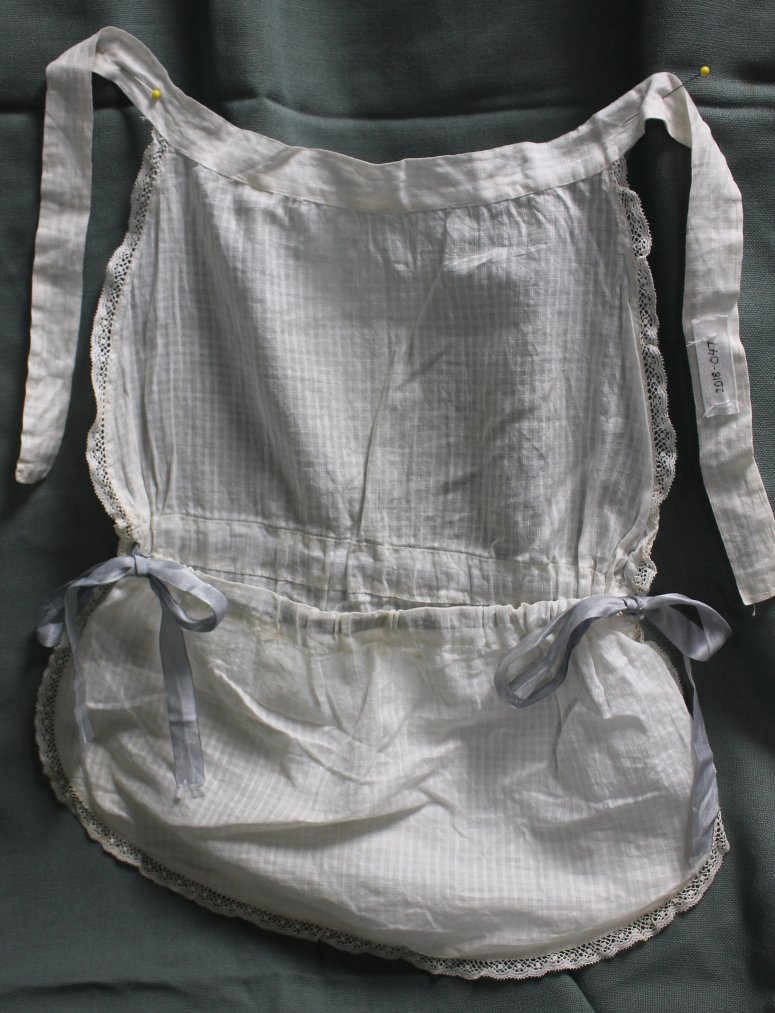
 RSS Feed
RSS Feed